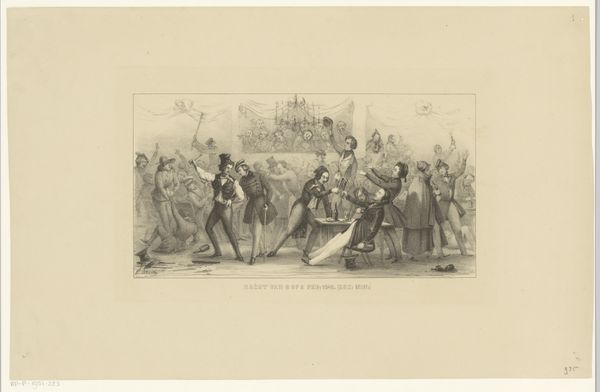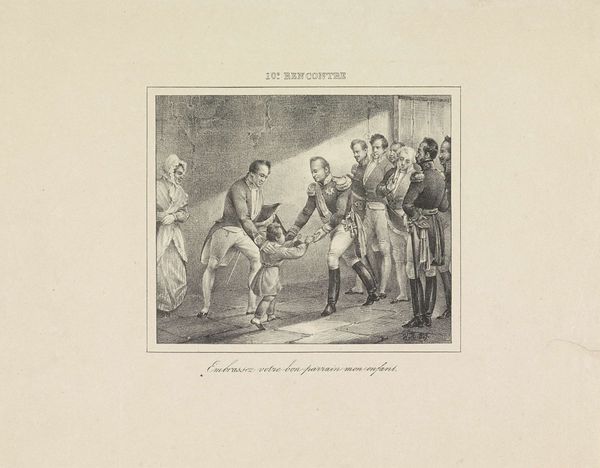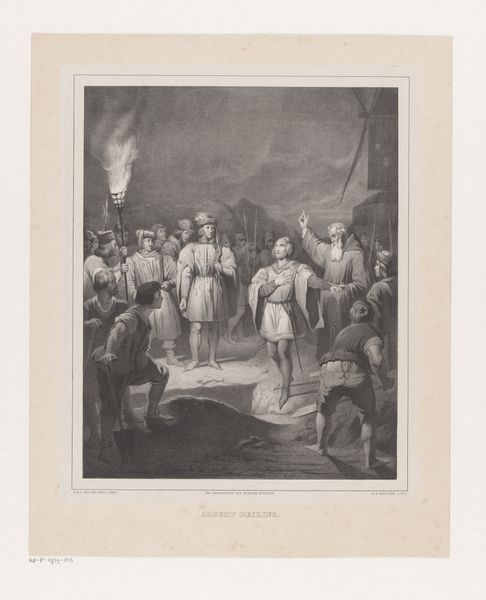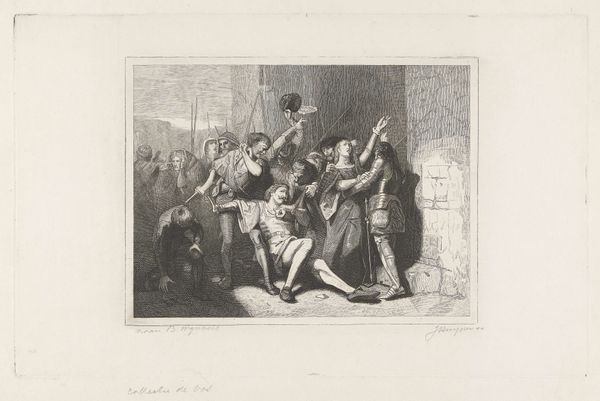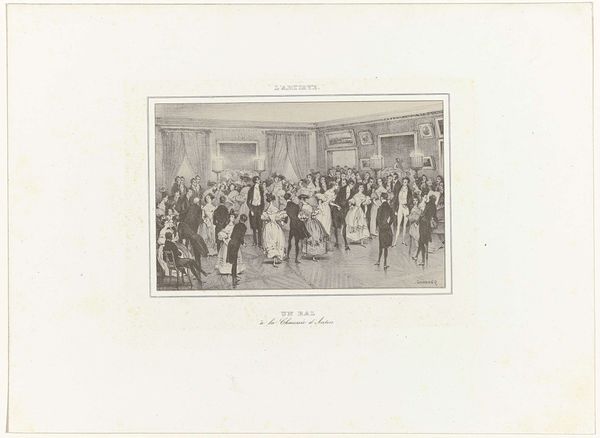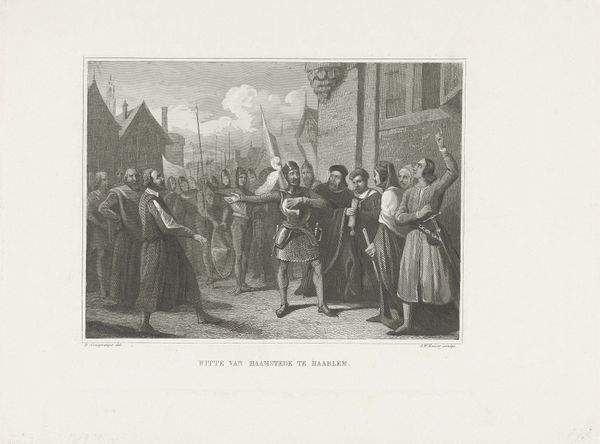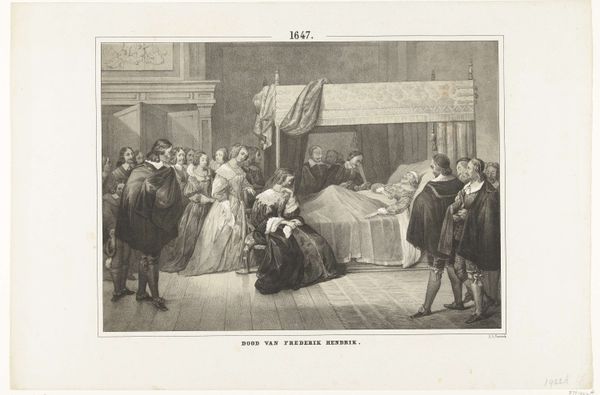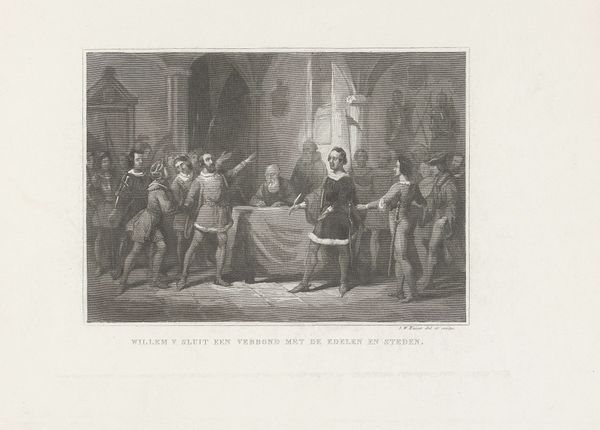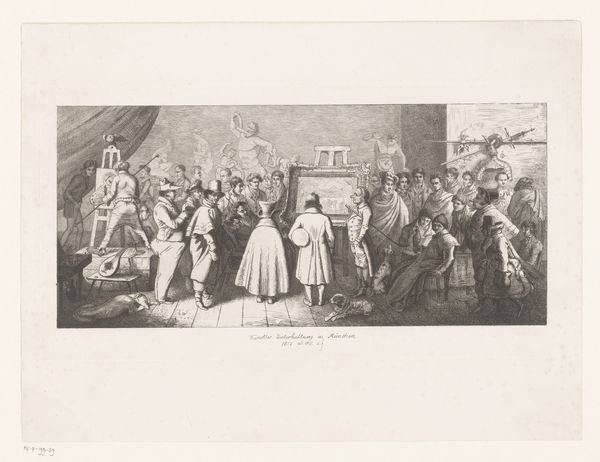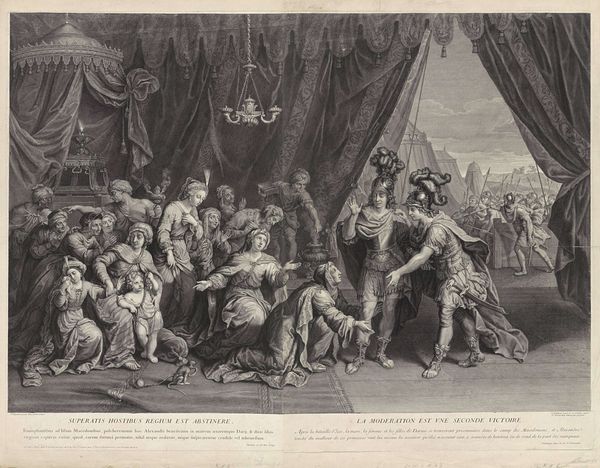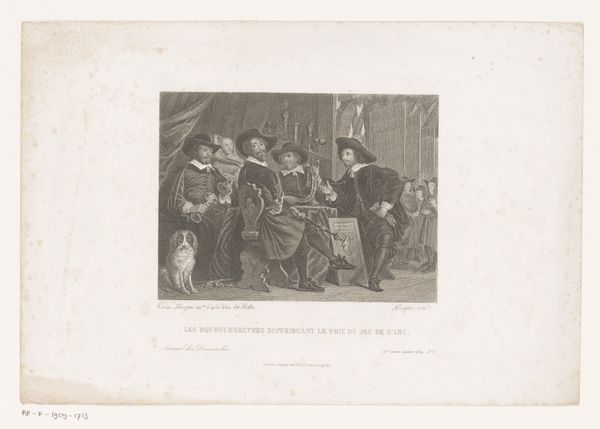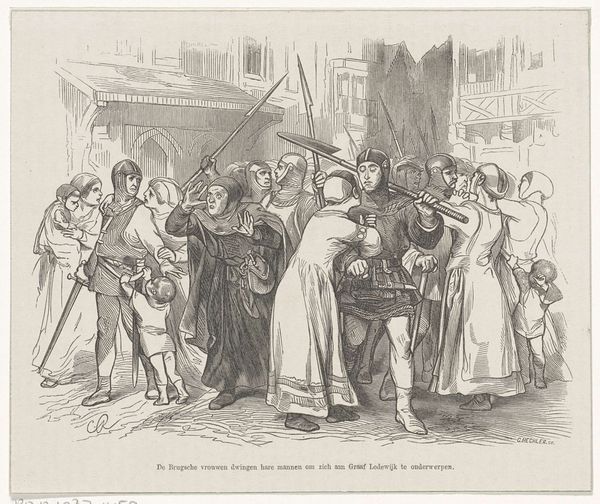
Maurits ontvangt de afgezanten van de sultan van Atjeh, 1602 1840 - 1884
0:00
0:00
janfrederikchristiaanreckleben
Rijksmuseum
Dimensions: height 193 mm, width 253 mm
Copyright: Rijks Museum: Open Domain
Editor: Here we have "Maurits ontvangt de afgezanten van de sultan van Atjeh, 1602" which translates to "Maurice receives the emissaries of the Sultan of Aceh, 1602," a print made between 1840 and 1884 by Jan Frederik Christiaan Reckleben currently housed at the Rijksmuseum. I am immediately drawn to the contrast in clothing, suggesting different social status and cultural origins. What do you see in this piece, especially given its depiction of a historical meeting? Curator: I'm interested in the materiality of this print. It's an engraving, a reproducible medium, meant for dissemination. This print, made long after the event it depicts, becomes a material record shaping the narrative of Dutch colonial encounters. It tells us less about the "actual" 1602 event and more about how the Dutch *wanted* to remember it in the 19th century. Notice how the engraver meticulously renders the details of clothing - emphasizing Dutch "civilized" garb versus the Sumatran delegation. Consider also how easily printed images circulated; What purpose did these serve in shaping popular opinion or justifying colonial ventures? Editor: That’s interesting. I hadn't thought about it that way. It makes me wonder about the engraver's own social position and biases in producing this image, almost like propaganda in retrospect. Curator: Precisely. The engraver, Reckleben, and the production process itself, become vital subjects for analysis. Were they commissioned? Who consumed these images? What power dynamics are materially embedded within this readily accessible form? By exploring such avenues we challenge traditional notions about artistry and focus instead on the historical, social, and material construction of the work. Editor: I see it now. It’s not just a depiction of a historical event, it's an object loaded with information about Dutch colonial ambitions and how they chose to portray themselves through easily-accessible visual material. Curator: Exactly. Analyzing it through a material lens reveals the power relations embedded within the work’s production, distribution and reception. Editor: Thanks, this has really made me think about historical art in a completely different light. I never thought about prints as more than just copies before. Curator: Indeed. It’s crucial to acknowledge how artistic creation always reflects its surrounding materials and conditions.
Comments
No comments
Be the first to comment and join the conversation on the ultimate creative platform.

